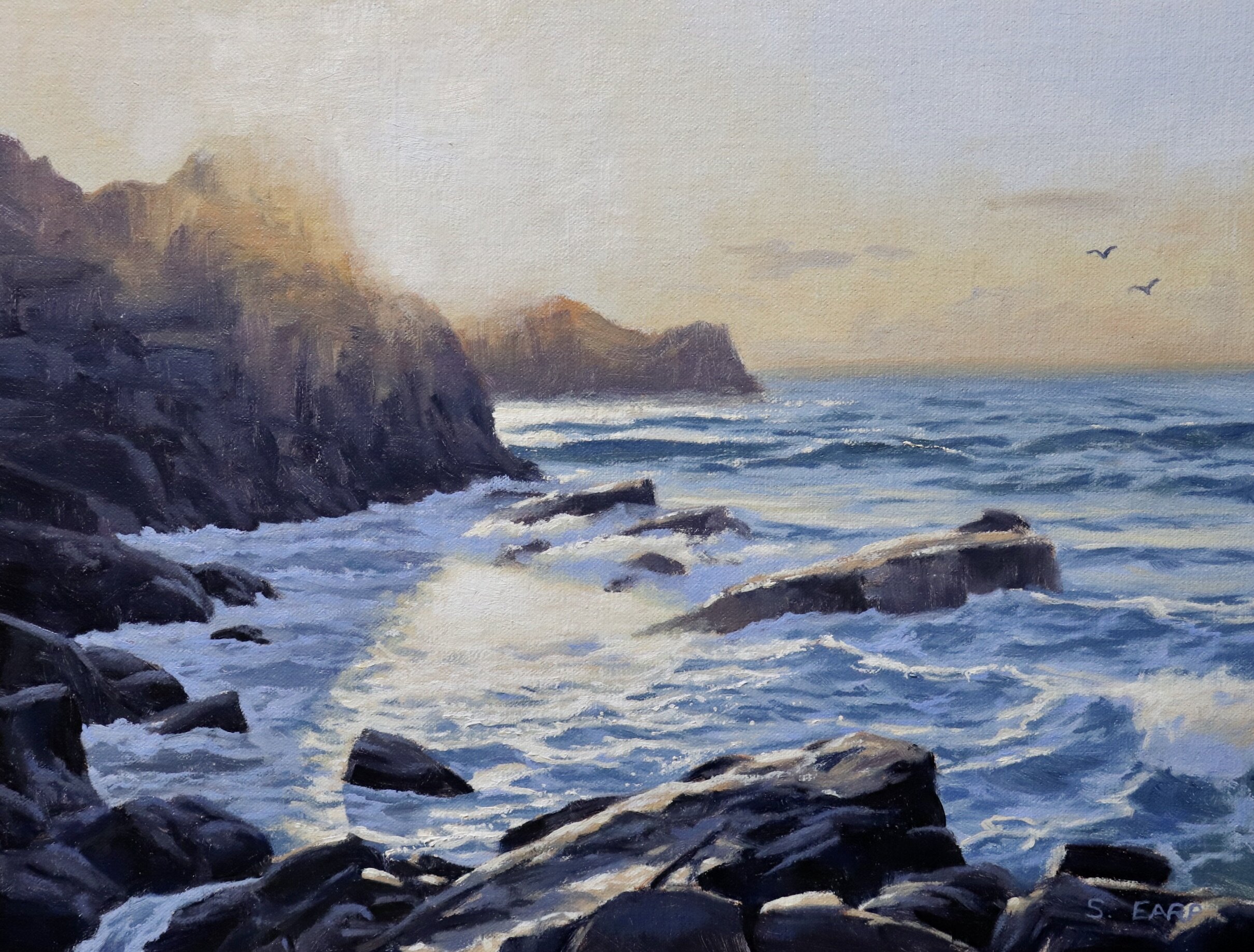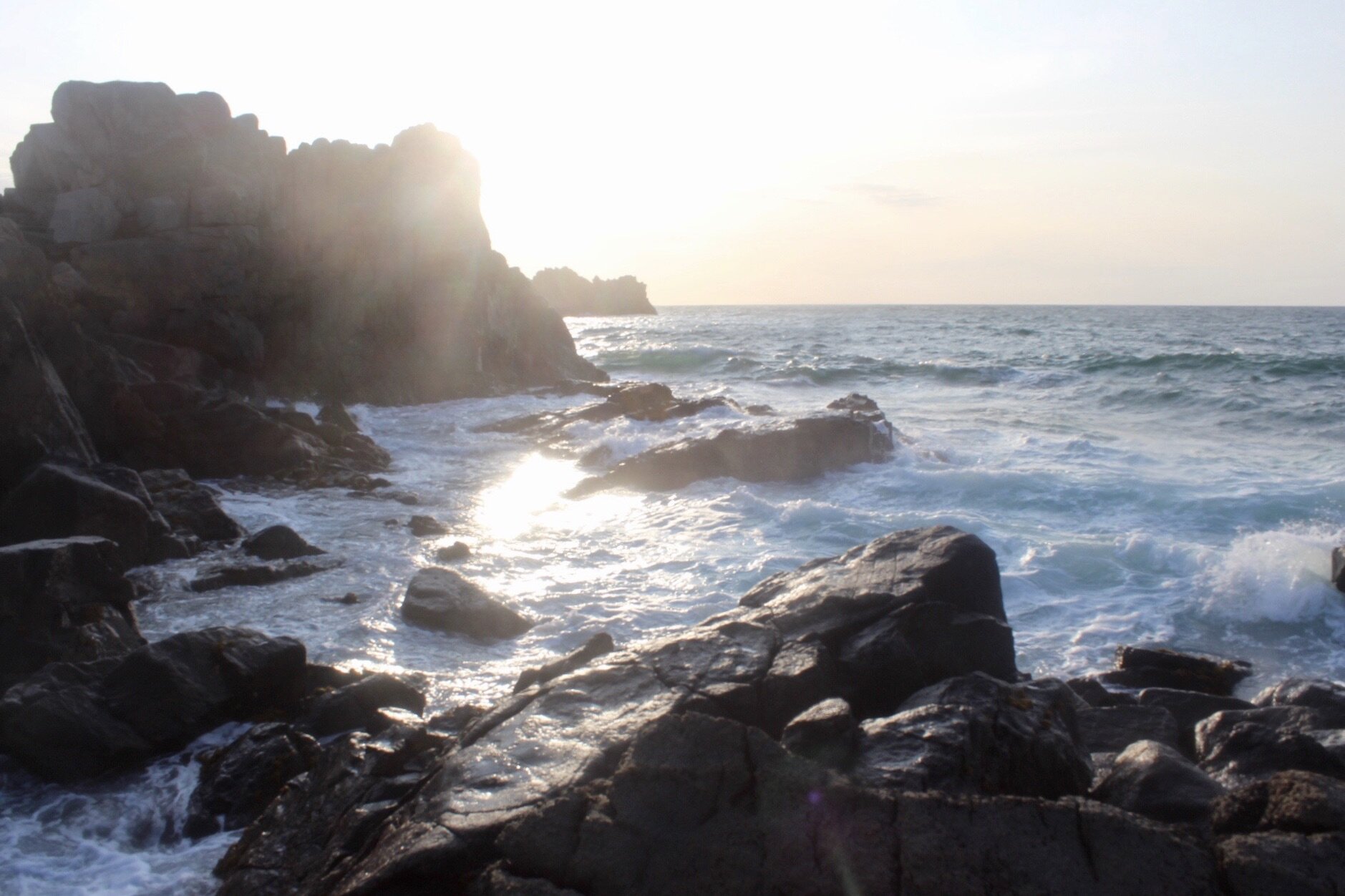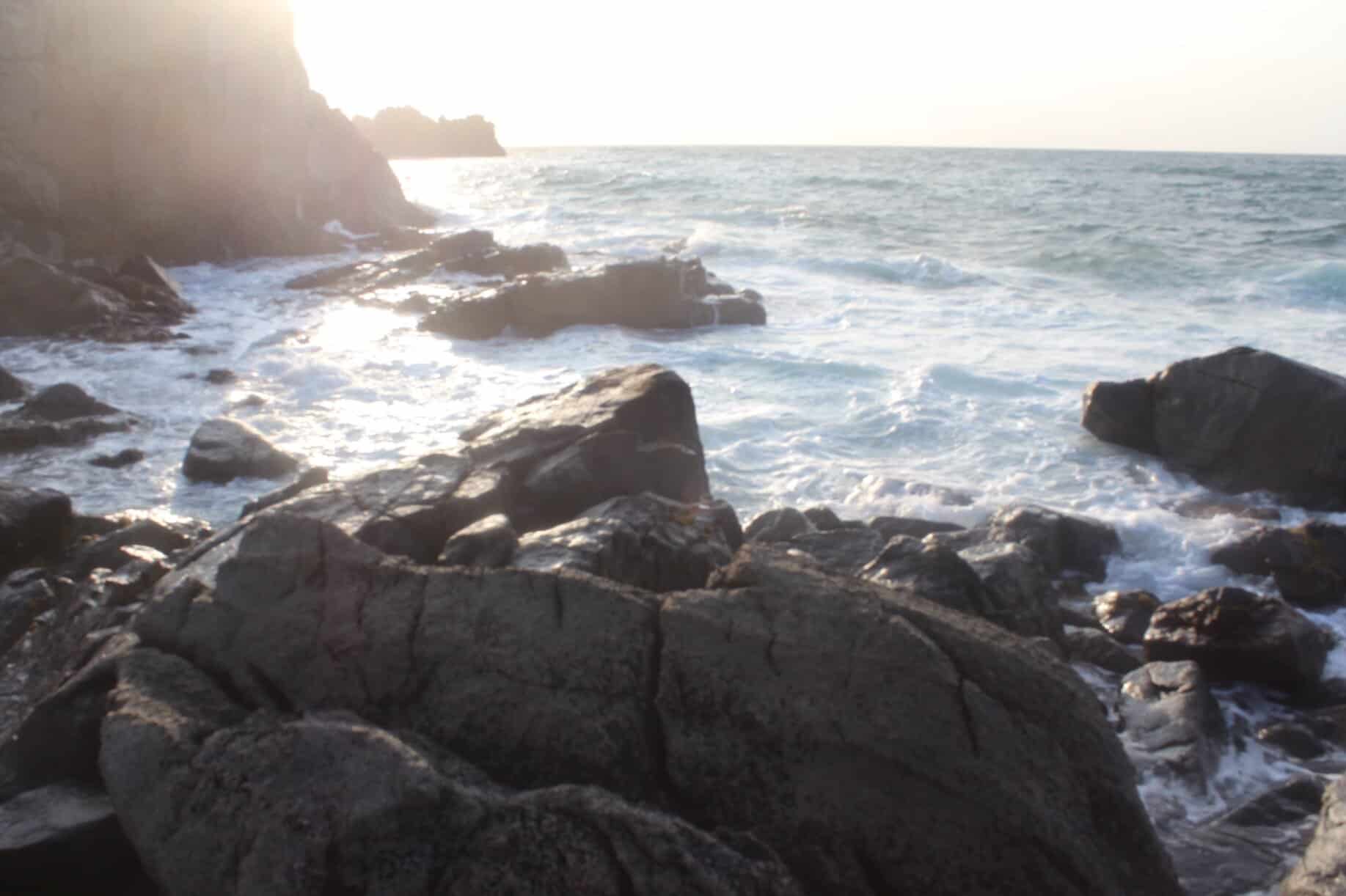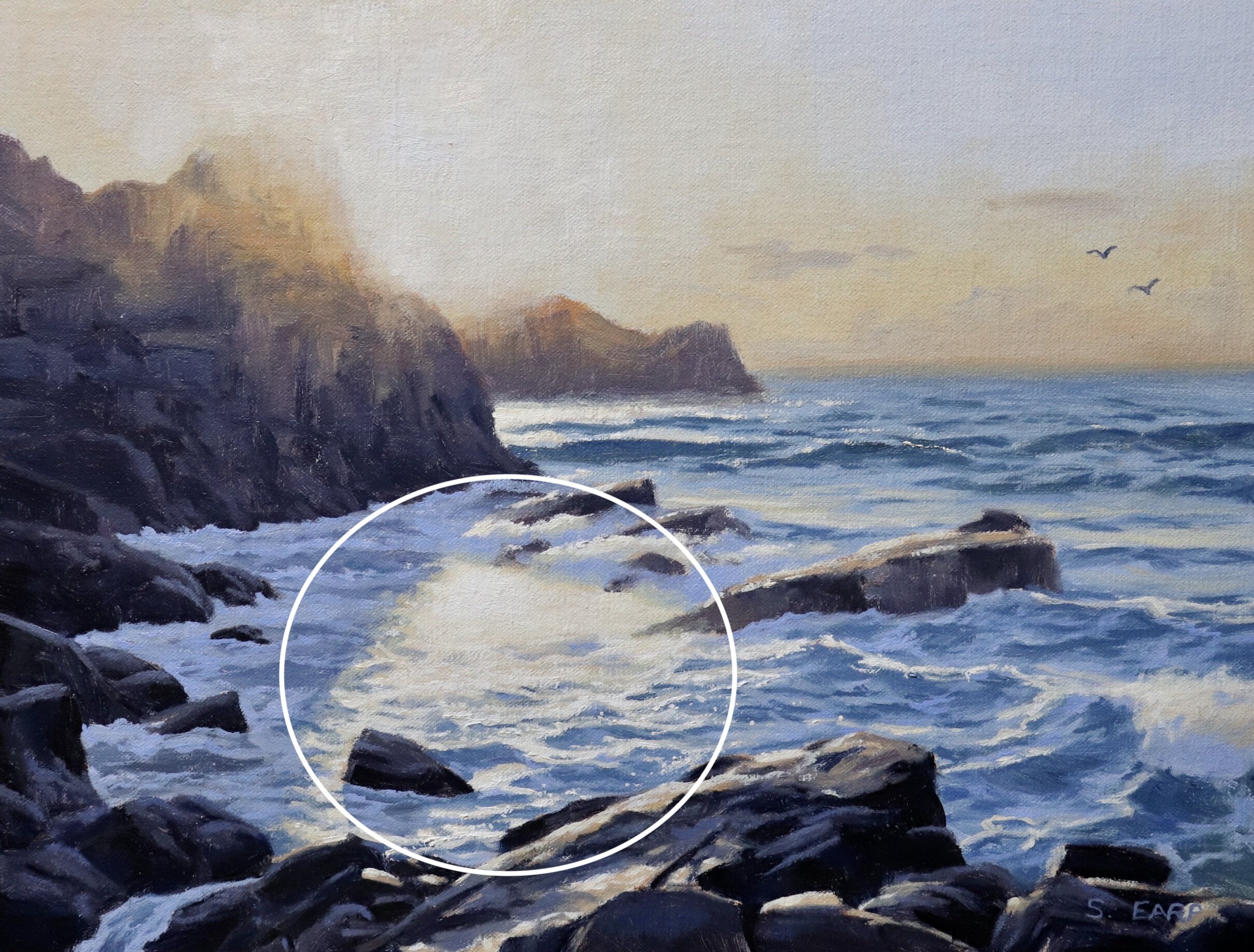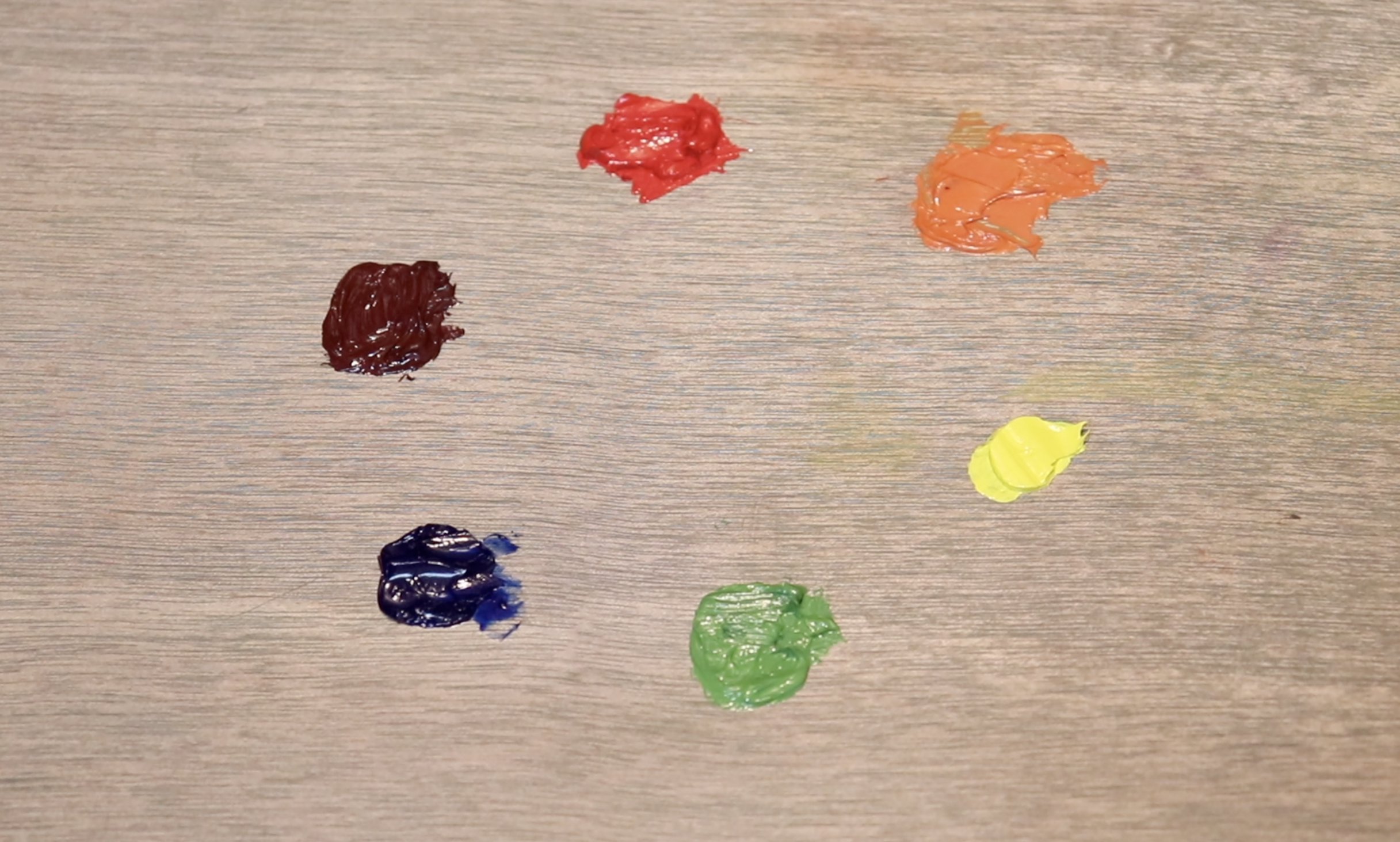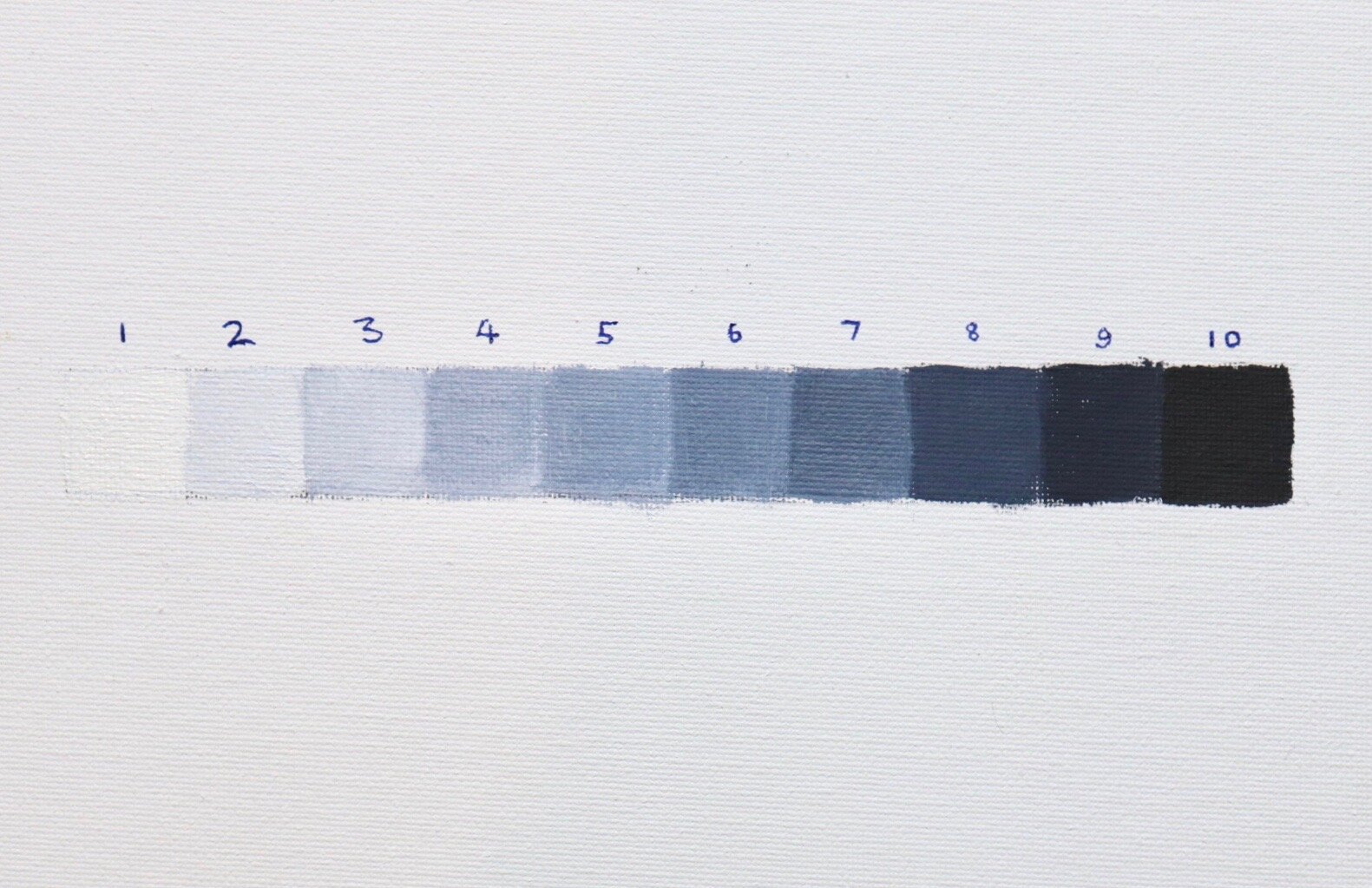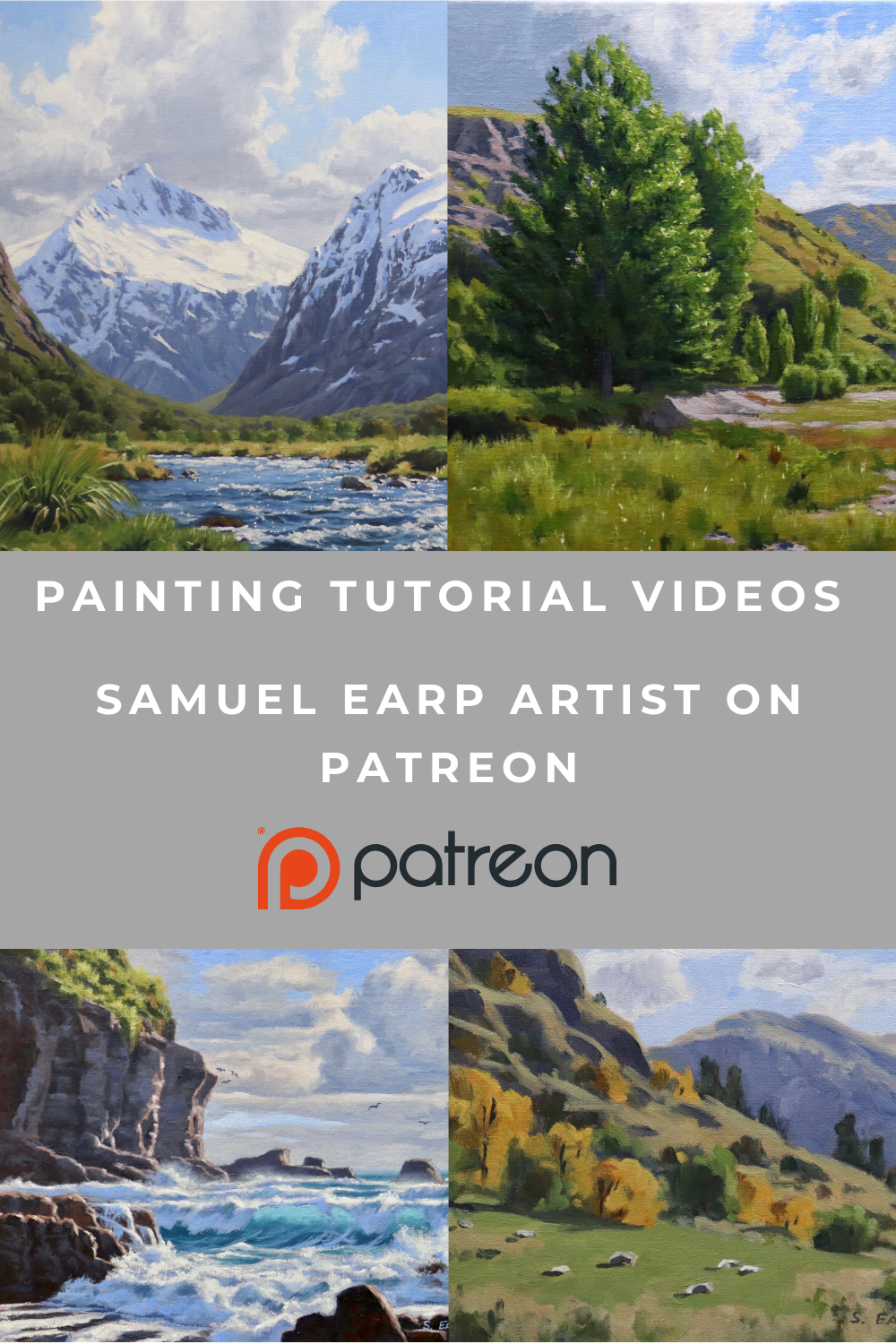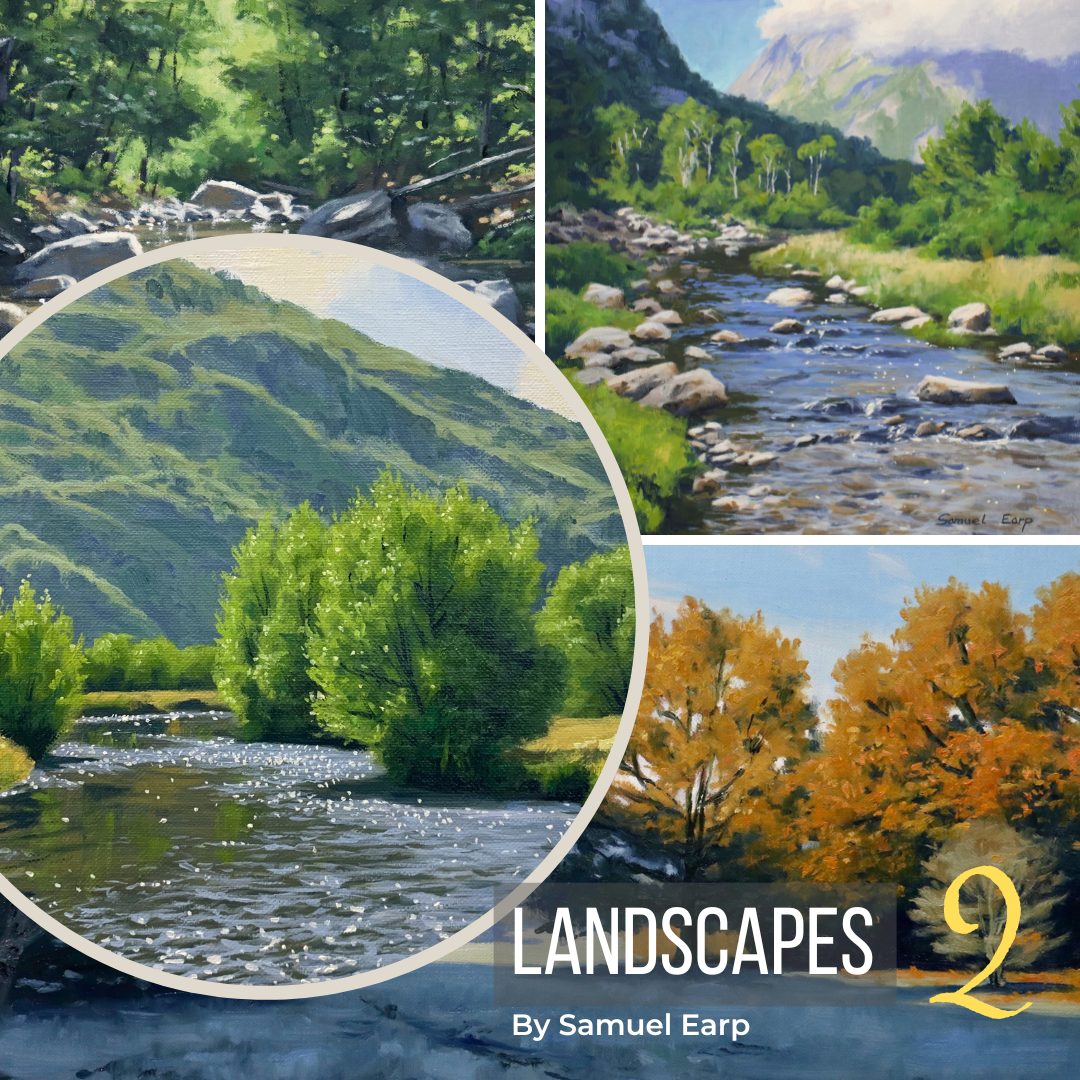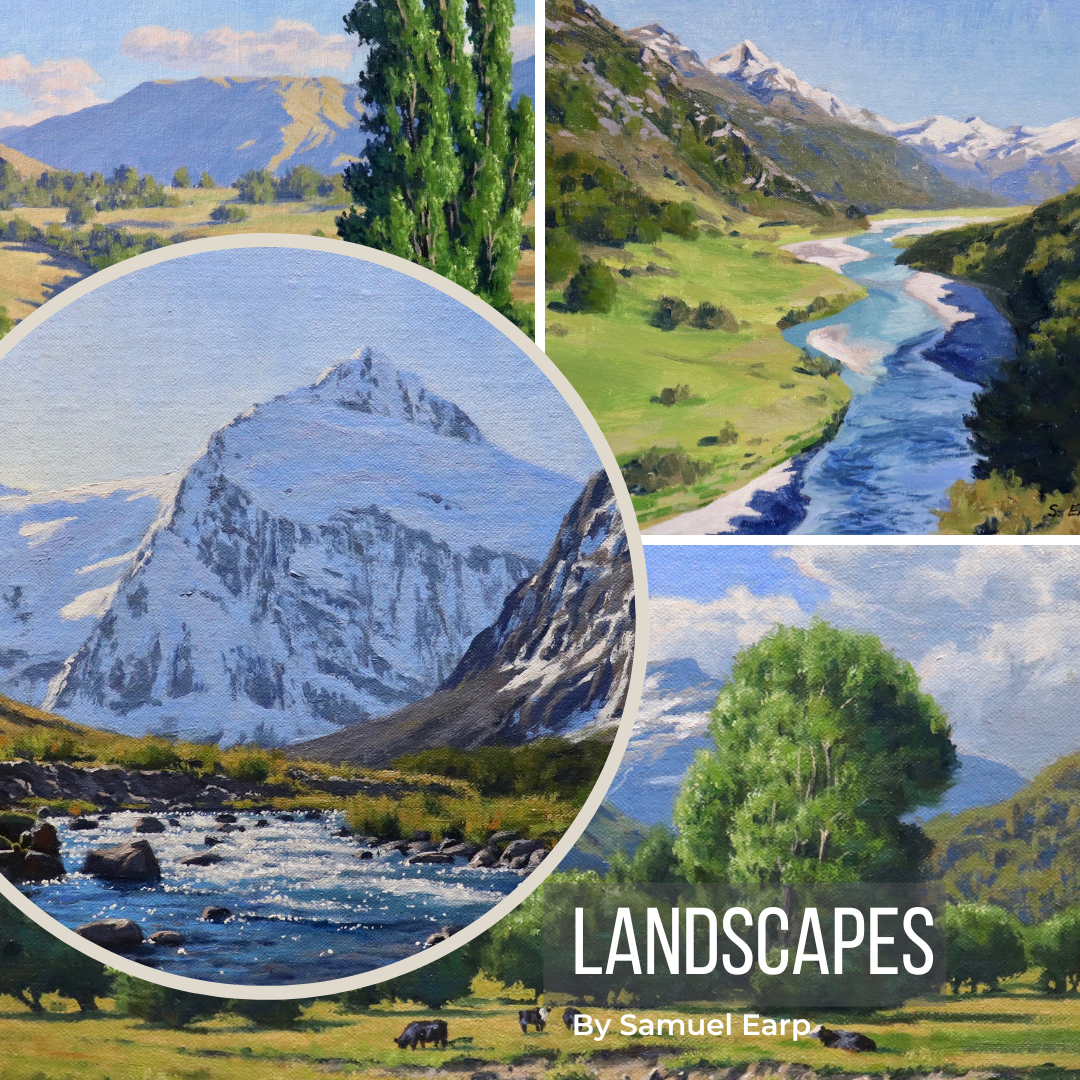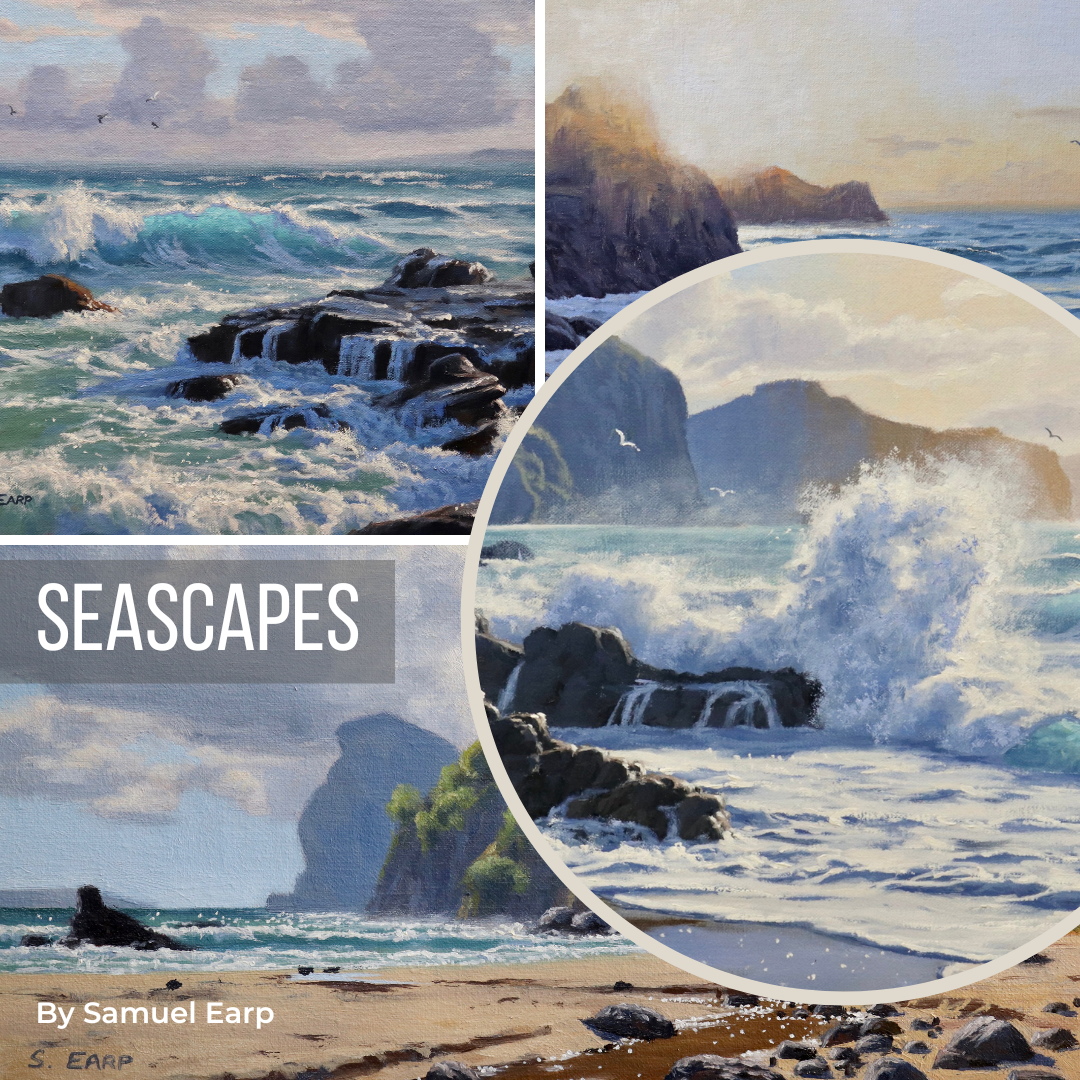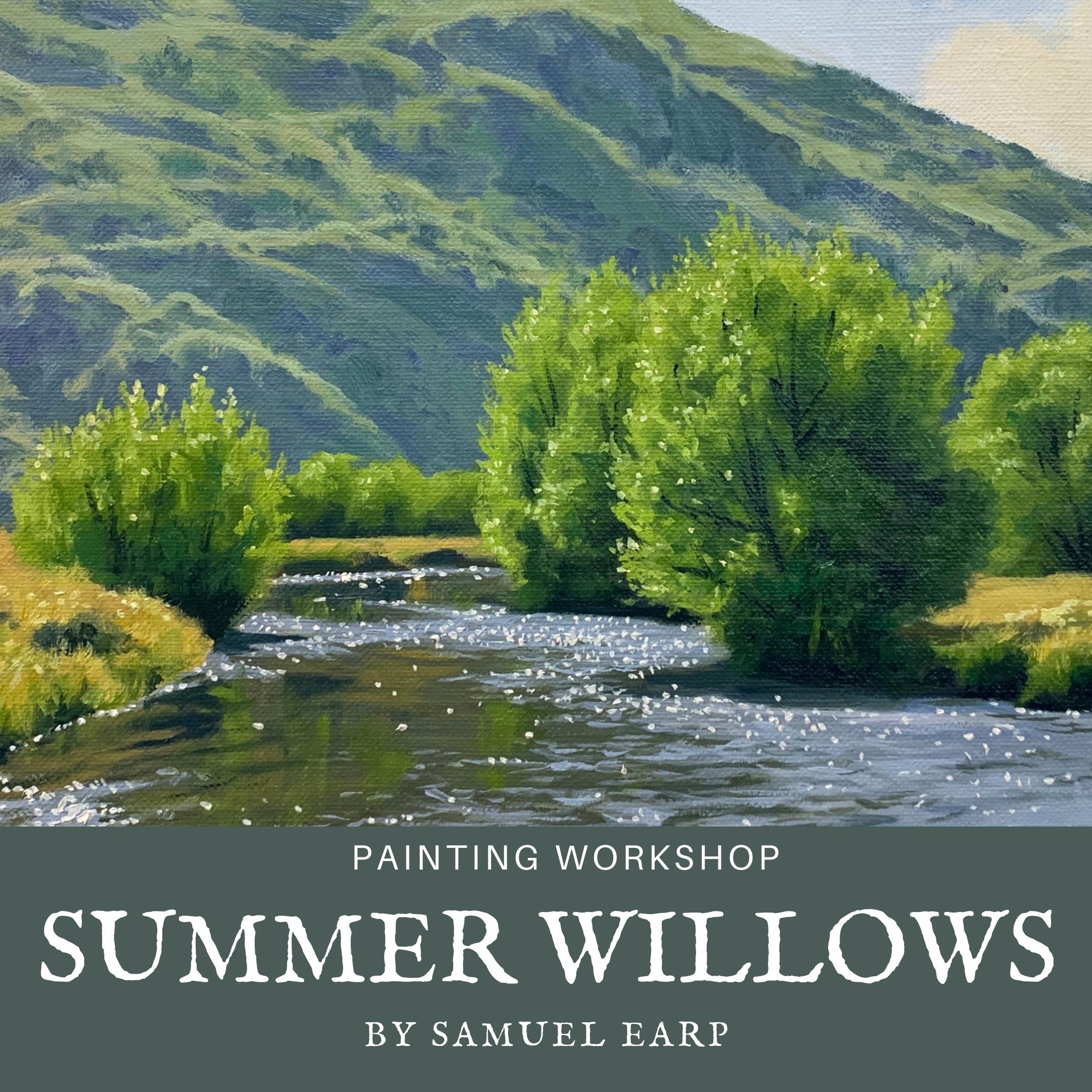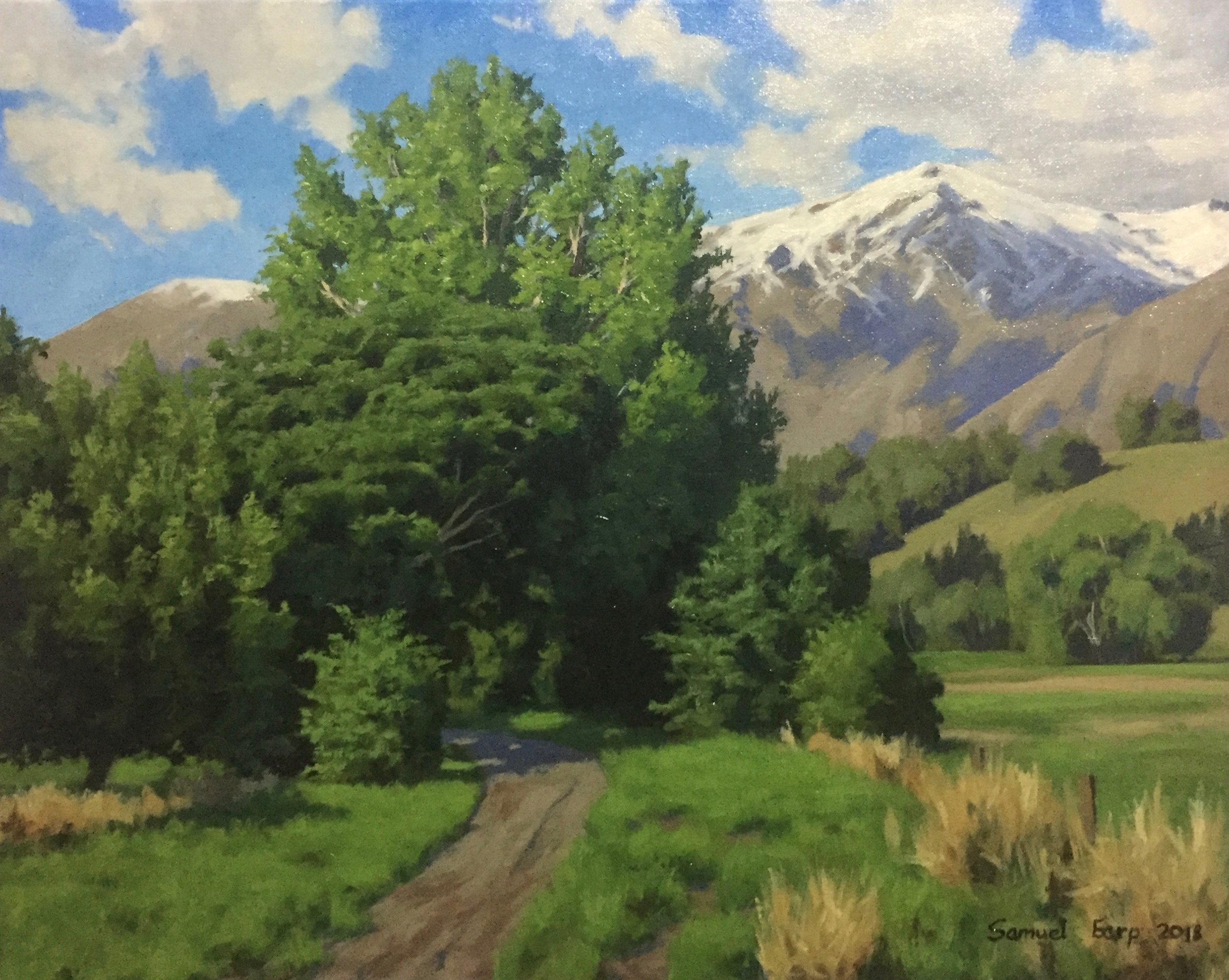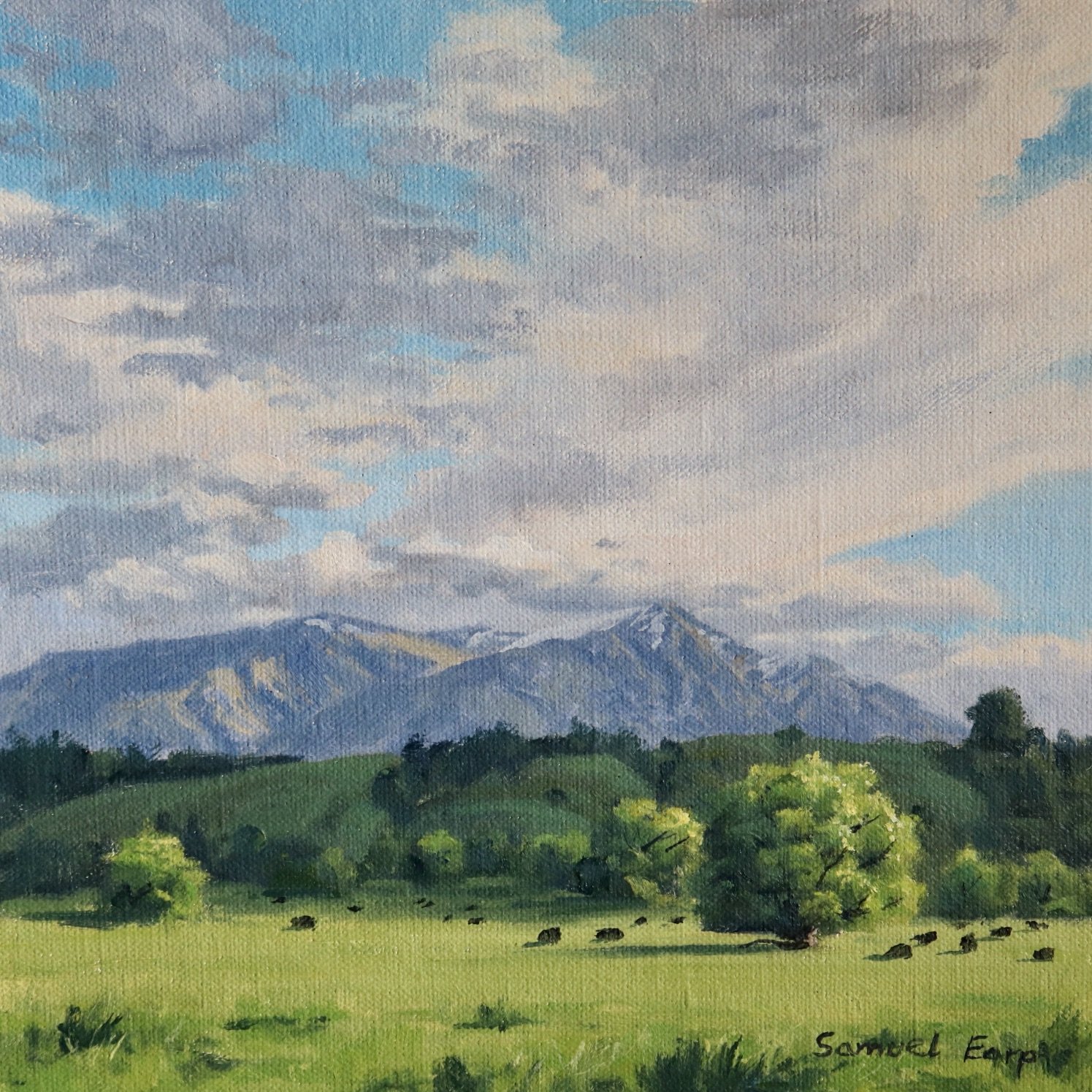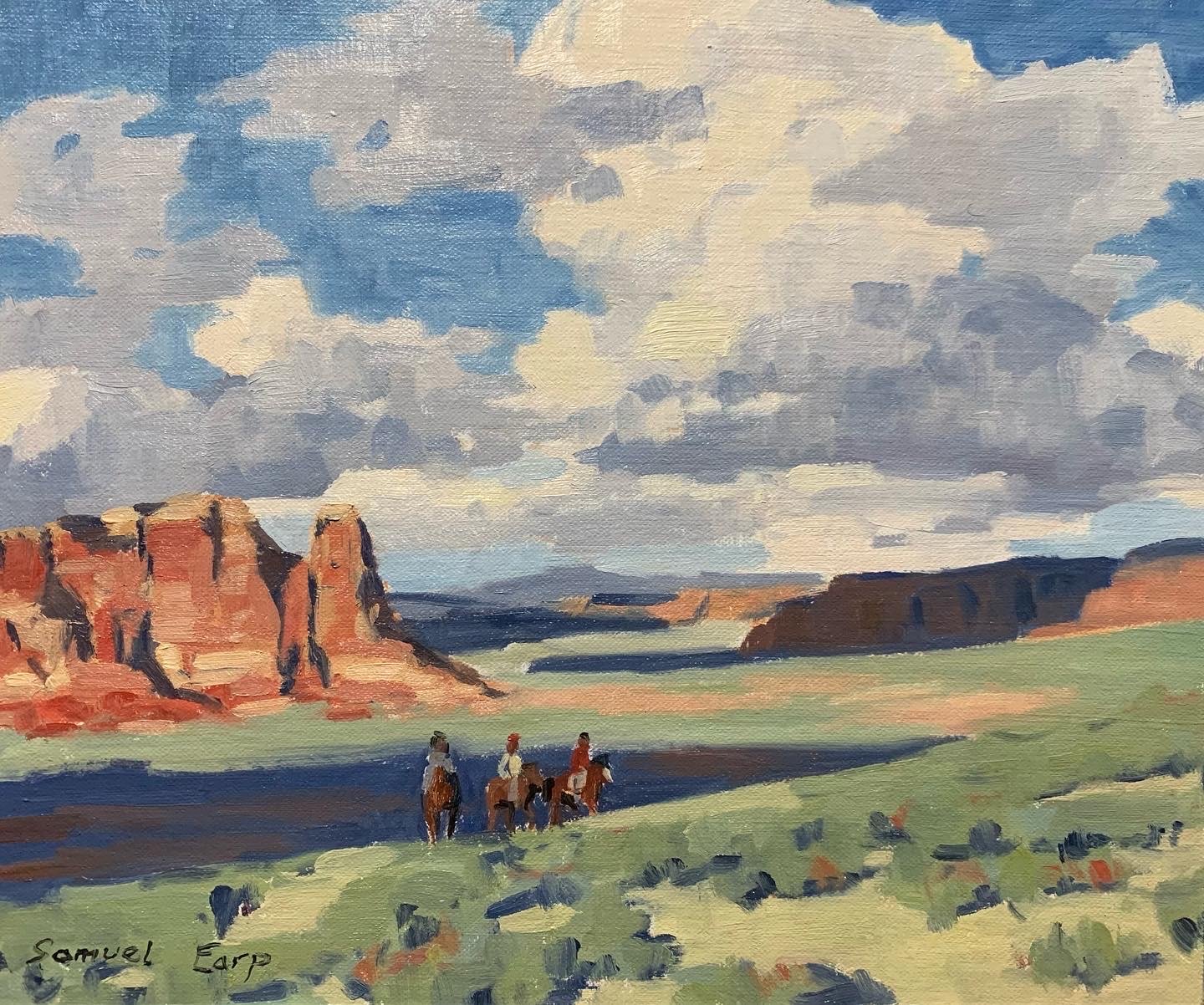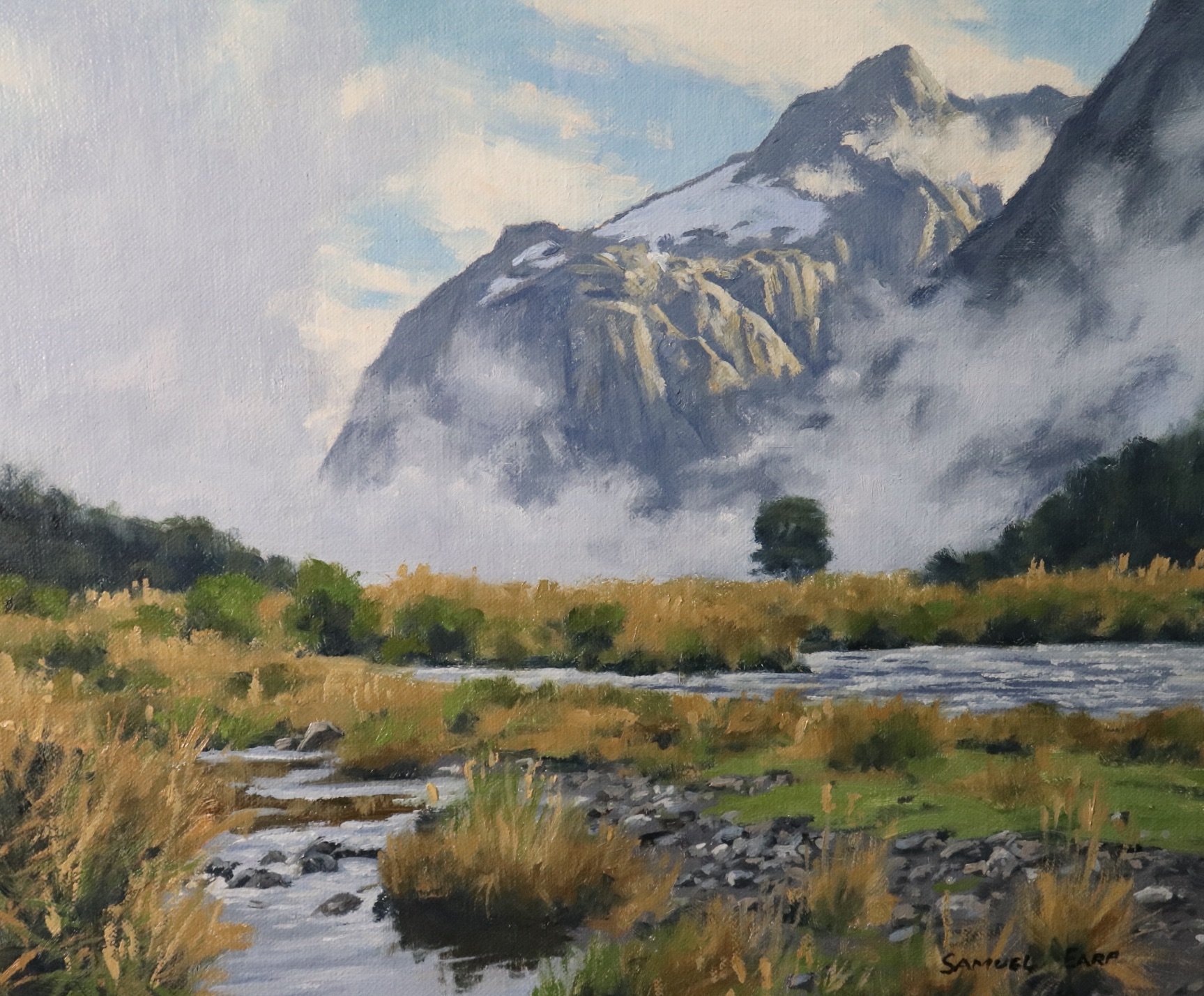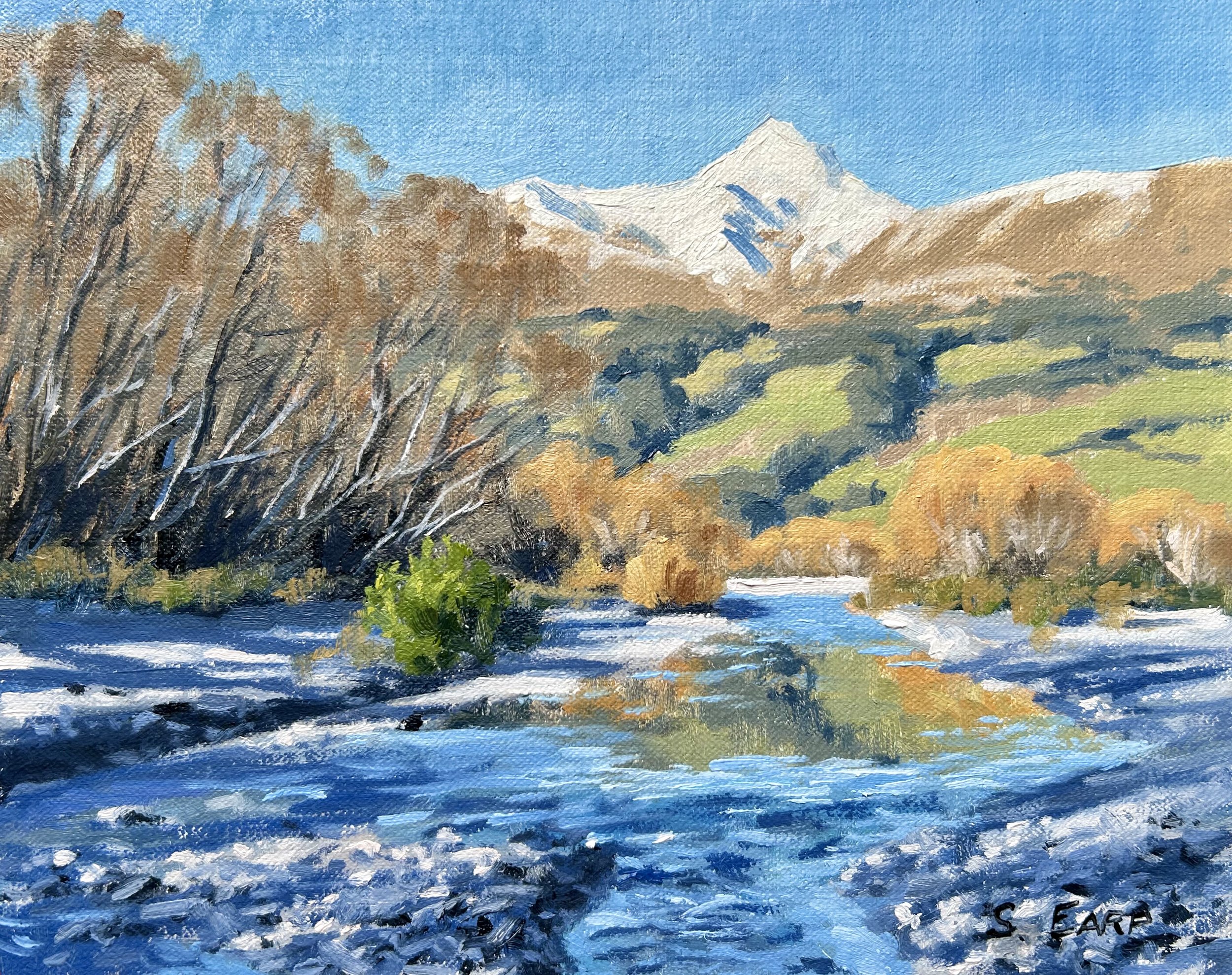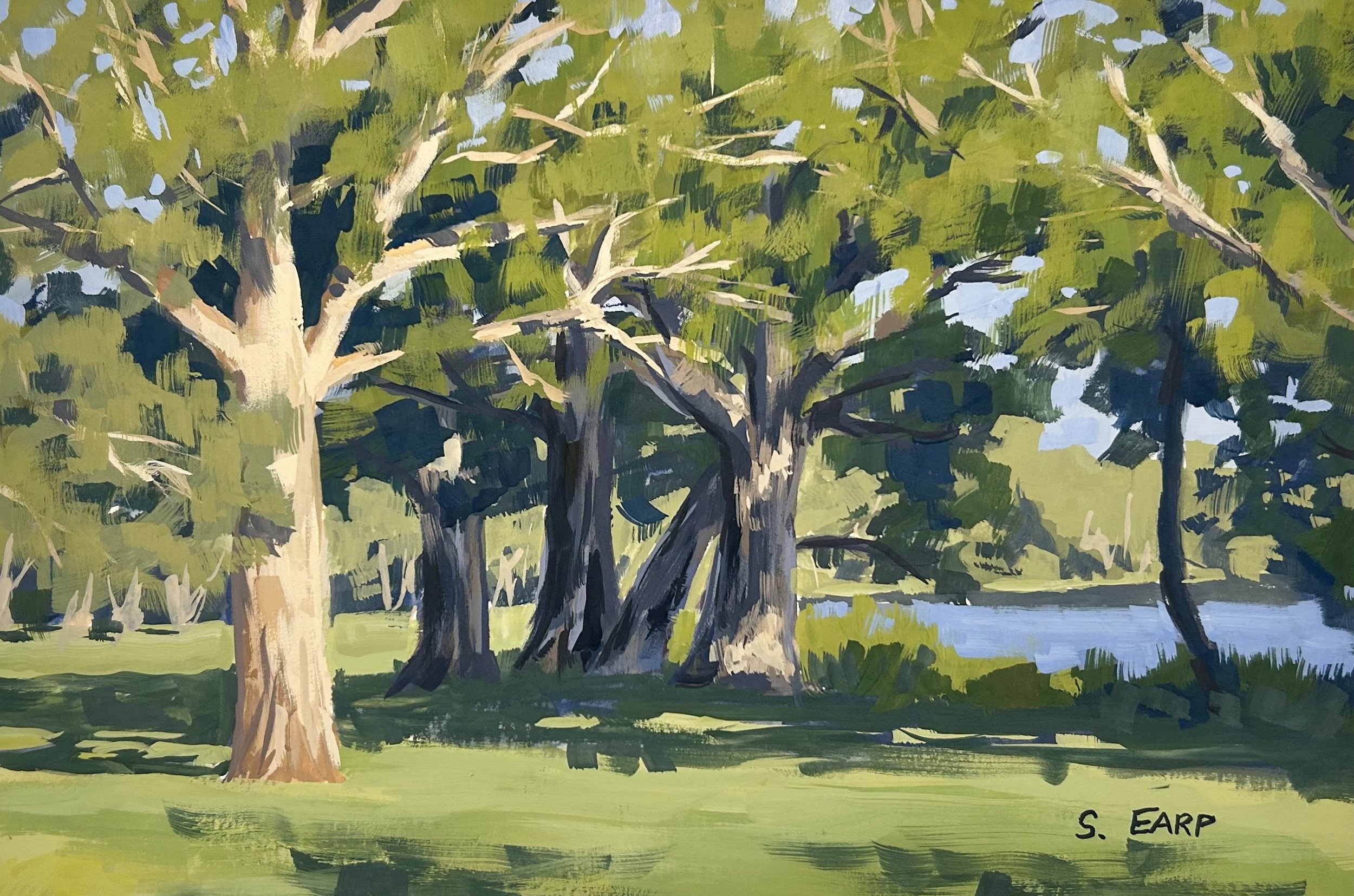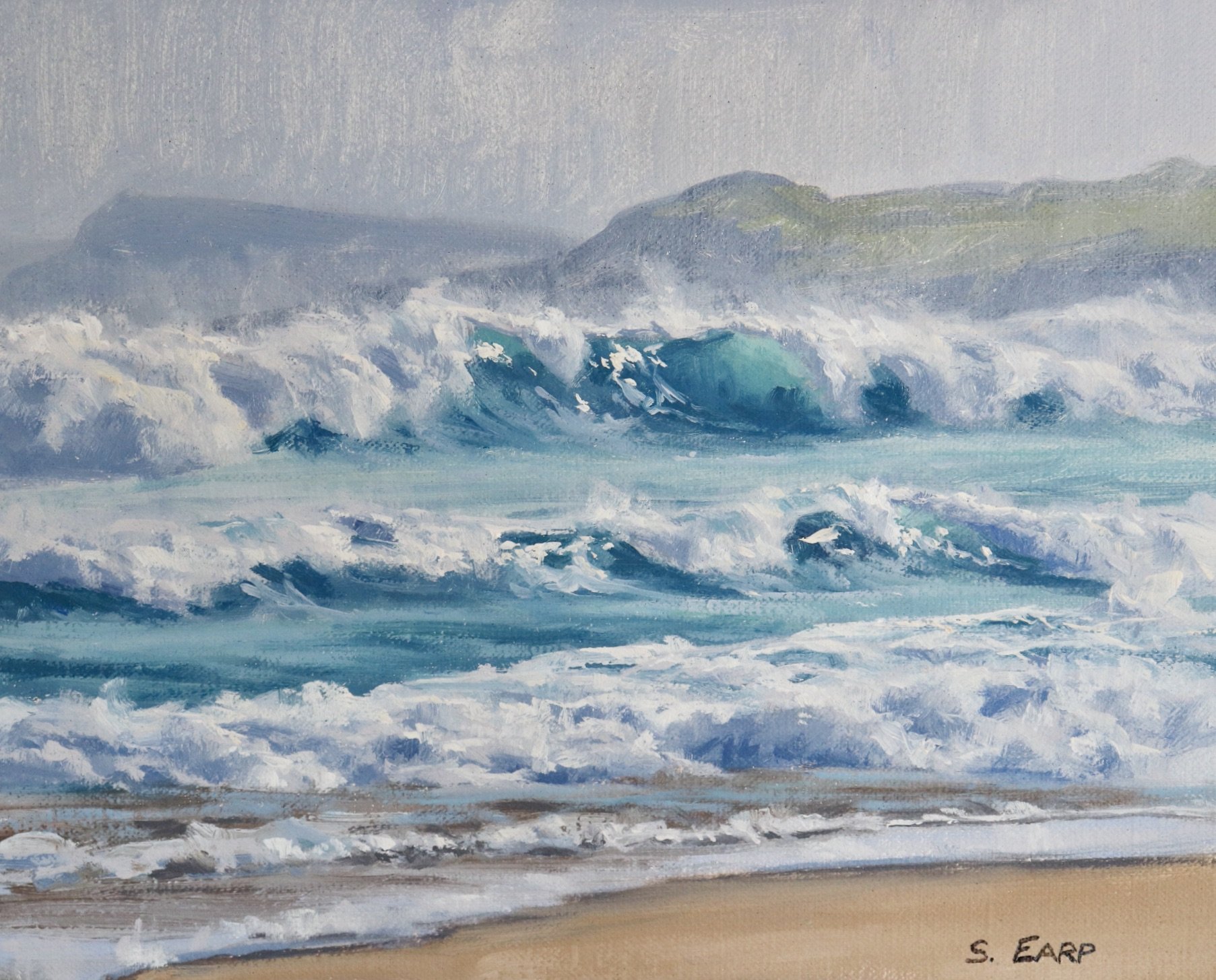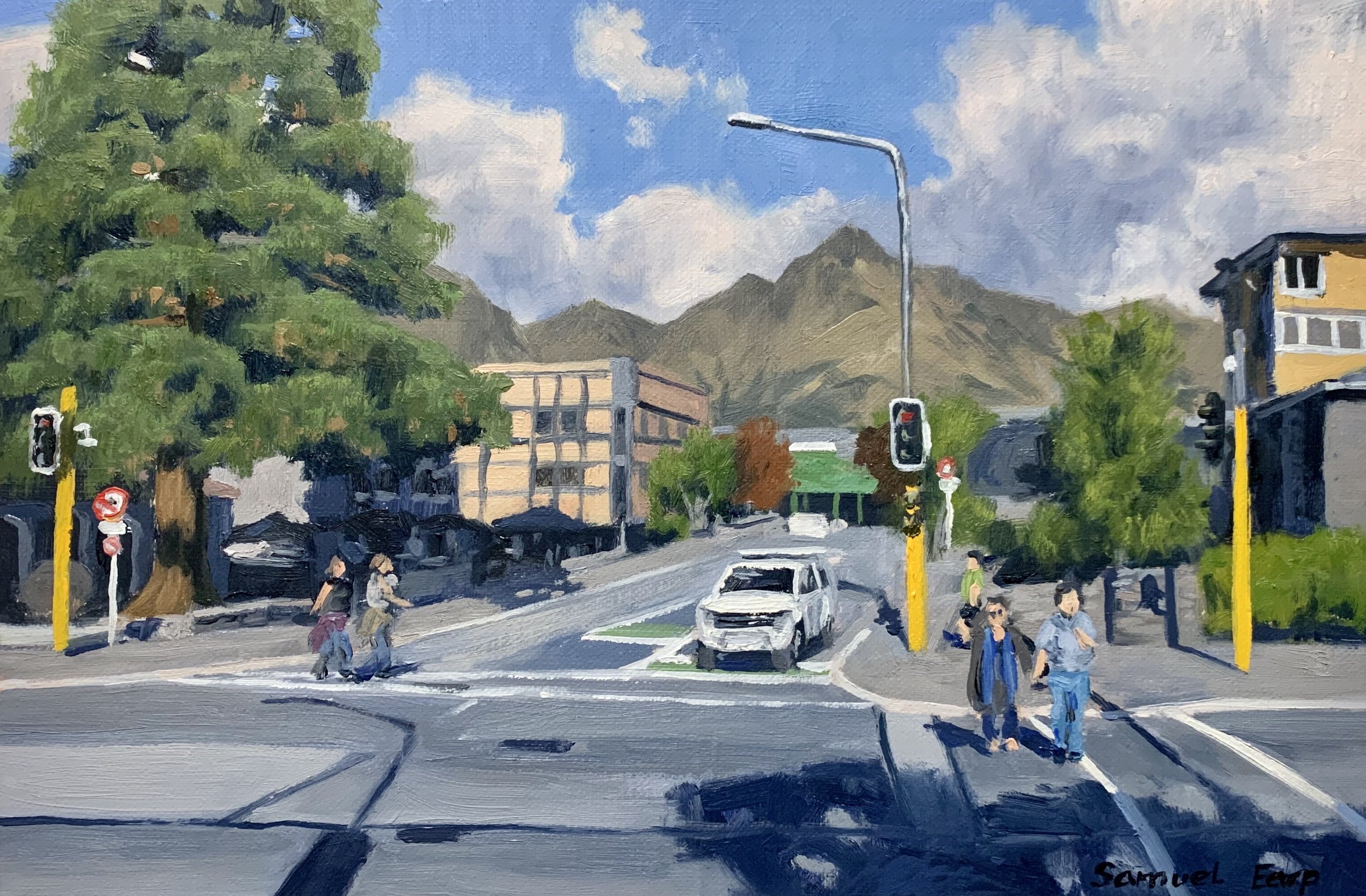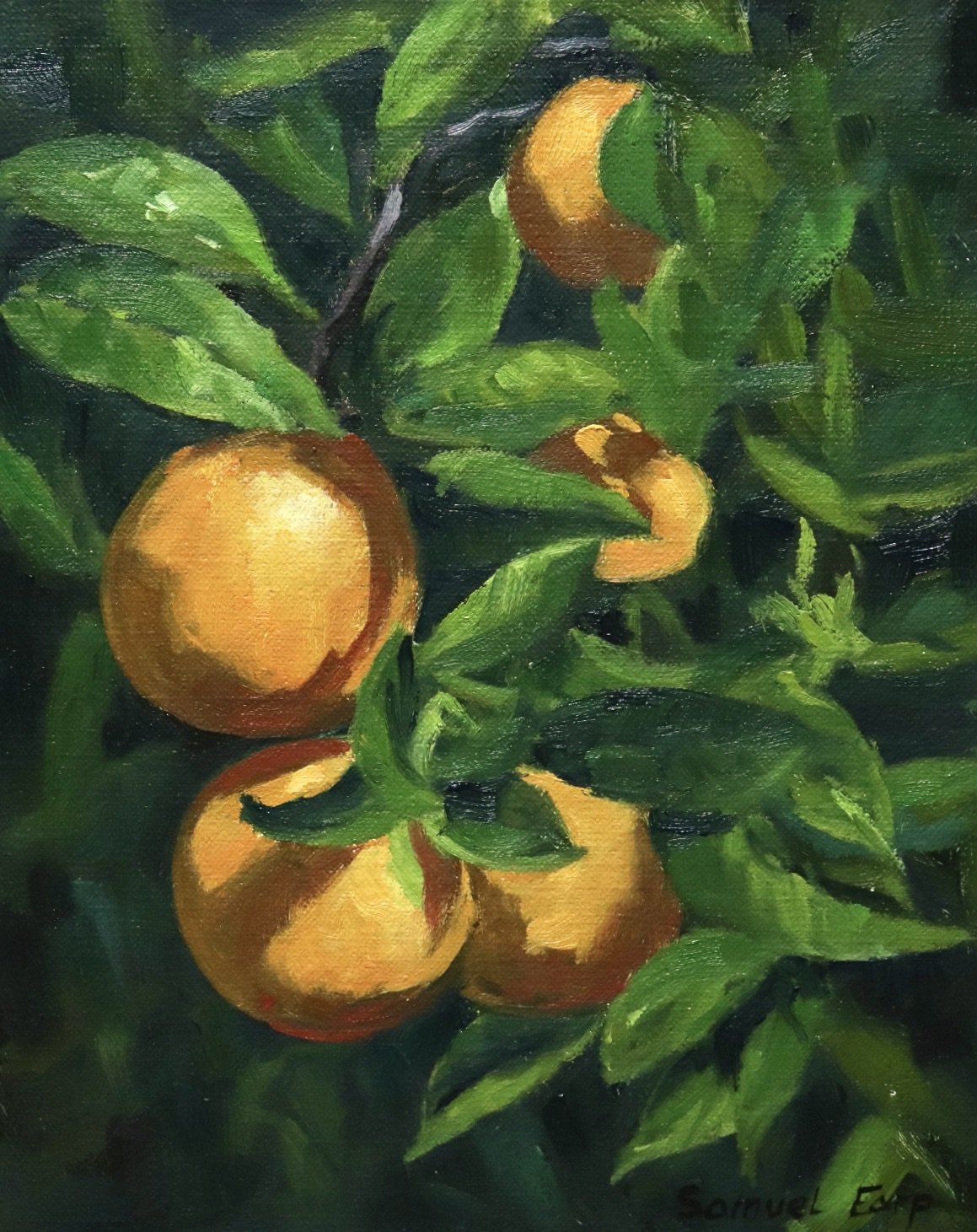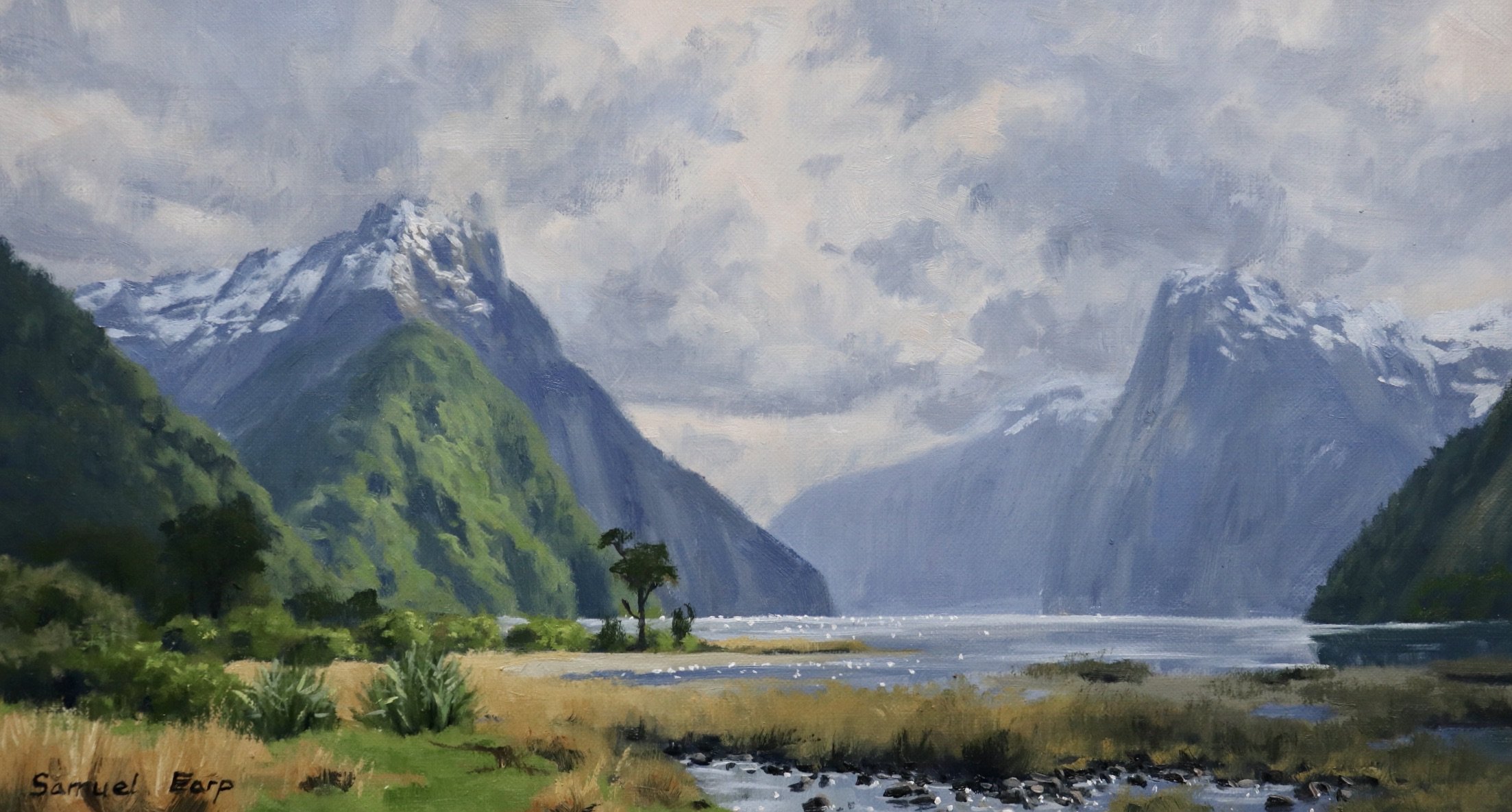Painting Workshop No.13 – Lesson Notes
Sunset Seascape
By Samuel Earp
These lesson notes are intended for use with the ‘Sunset Seascape’ painting tutorial video. If you stumbled across this page you can purchase the video by clicking the link below:
Reference Photos
Please feel free to use the reference photos provided.
Composition
This painting incorporates a circle or ‘O’ composition which implies unity and space. The circle composition is a good solid design to use in your painting. In this case the circle is in the foreground water surrounded by the rocks. The bright sun is also a focal area.
Things to be Avoided in Composition
-
Never have your focal area in the middle of the painting, avoid centred objects
-
Never have your horizon line in the middle of the painting, either go for a lower or higher horizon
-
Avoid repeating objects, equal masses, repeating lines and vectors and aberrations in general.
-
Avoid having too much detail as this could spoil the composition.
Colours Used in This Painting
I painted this art work in oils but you can also use acrylics. the colours I used includes:
-
Titanium white
-
Burnt sienna
-
Yellow oxide (you can also use yellow ochre instead)
-
Quinacridone crimson (you can also use alizarin crimson instead)
-
Ultramarine blue
Brushes
Below is a general list of brushes I use for landscape paintings
-
No.5 flat
-
No.3 flat
-
No.3 filbert
-
No.1 round
-
No.0 round
Stage 1 – Blocking in the Painting
I am painting on a 12” x 16” linen panel. The panel is pre made with a medium weave linen that is oil primed.
I sketch out the composition using a No.1 round brush with burnt sienna mixed with Liquin Original (Liquin). I am using Liquin as a medium to thin the paint, it also has the advantage of speeding up the drying time.
I begin the painting by focusing on the dark values first. Value refers to how dark or light a subject is and here the darkest values are within the rocks. I want to mix some cool neutral greys for the rock shadows and I use varying combinations of ultramarine blue, burnt sienna, quinacridone crimson and titanium white.
You can mix some nice neutral greys with a combination of these colours but I always edge my mixtures towards the blue side so the colours don’t look muddy. The quinacridone crimson gives the colour a violet tint.
I’ve used the darkest colours in the rocks for the occlusion shadows and the cracks and fissures.
Once I’ve established the rocks I work on the sky. I want to create some warm tones here so I mix titanium white, yellow oxide and a little quinacridone crimson.
In order to create the illusion of bright sunlight it is necessary to paint the upper sections of the with my sky mix. This will help to make the sun look like there is a halo of warm light around it. I use the same colours I used in the sky but I increase the saturation by mixing in more yellow oxide and quinacridone crimson.
For the area around the sun I have mixed in more titanium white into my warm sky mix and I am able to use the same colour for the reflection in the water.
There is an area of blue sky visible in the upper right corner of the painting and for this I mixed titanium white with a little ultramarine blue making sure to keep the value light.
I paint the ocean with a mix of ultramarine blue, a little yellow oxide and titanium white. For the darker values in the breaking waves I use less titanium white in the mix and more ultramarine blue. I use more ultramarine blue in the water in the foreground and for the lighter values in the troughs of the waves and ripples I use more titanium white in my mix.
I paint the wet reflective surfaces of the rocks using my warm sky mix I made earlier. I also paint the white water around the base of the rocks especially on the left side of the painting. For this I use a mix of titanium white, ultramarine blue and a little quinacridone crimson.
At this point in the painting I stopped to let it dry so I could begin adding details later on.
Stage 2 – Adding Details
Once the painting was dry I added finer details to the rocks and water in order to build up three dimensional form. Essentially I am using the same colours that I used during the block-in stage but I have been using lighter value colour in many cases.
I paint more half tones in the rocks with a mix of ultramarine blue, burnt sienna, quinacridone magenta and titanium white.
Stage 3 – Completing the Painting
I complete the painting by adding some final highlights to the bright sun with a mix of titanium white and the smallest amount of yellow oxide. I am then able to use the same colour mix for the highlights in the water where the sun is reflecting off the surface. I also use this colour mix for the highlights on the wave crests and to paint some sparkles on the water.
I paint further highlights in the troughs of the waves and ripples with a mix of titanium white and a little ultramarine blue.
Colours and Values
Throughout the video you will hear me talk about colours and values. It is important to have a basic understanding of colour theory and values when painting as it will make colour mixing easier for you. Luckily it’s easy to learn the basics and the rest is just brush mileage.
Colours Theory Terms
Below are some terms I use throughout the video and their meanings.
Hue: This refers to the main attributes of a colour and is dependent on its dominant wavelength, irrespective of how light or dark the colour is. For example, the colour is discernible as blue or a red etc.
Saturation or Chroma: This refers to the purity or intensity of a colour. You can reduce the saturation of a colour by adding a neutral grey or an opposite colour on the colour wheel.
Value: This is how light or dark a subject is. Getting your values correct is one of the keys in the success of a painting.
Tone: This is a broad term for describing a colour that is not a pure hue or black or white. It is a widely misunderstood term.
The Colour Wheel
For the benefit of people who are new to painting that are watching this video I will briefly go over the basics of the colour wheel. Knowing how the colour wheel this works can really help you with colour mixing.
Above is a simplified colour wheel. The colour wheel contains three primary colour blue, red and yellow and three secondary colours orange, green and violet.
When these colours are arranged on the colour wheel a primary colour is always opposite a secondary colour and are known as compliments or complimentary opposites. So, blue is opposite to orange, red is opposite to green and yellow is opposite to violet.
So why is this important?
If you want to desaturate a colour you can do this by mixing its complimentary opposite as the two colours will cancel each other out. In this manner you can create some neutral greys and browns especially when combined with white.
Complimentary colours also look good next to each other in a painting, for example greens often look more harmonious in a landscape if there are some reds amongst the mix or colours that contain red. If you look closely in nature, you’ll see naturally occurring complimentary opposites everywhere.
The Value Scale
Value is how light or dark a colour is and is perhaps one of the most important concepts in painting. The success of a painting rests on the relationship between the values in the painting. If they are not working and not in harmony, then the whole painting can lack any kind of depth.
Values in art work are represented on a scale with the highest value being white and the lowest value being black. The greys in between are known as mid or half tones.
In general, you will find your darkest darks and lightest lights in the foreground of a landscape. However, as landforms recede into the distance darks are not quite dark and lights are not quite light as the tonal scale narrows.
If you are unsure of where your light and dark values are in the scene you are painting, switch your reference photo to black and white and you’ll be able to clearly see where your light and dark values are.
In general, you’ll find that the sky is often one of the lightest values in the landscape. Grass is also generally lighter in value. Rocks and mountain faces are darker in value and often occupy the mid-tone range of the value scale. Trees are generally some of the darkest values in the landscape.
New Painting Video Every Month on Patreon
Subscribe to my Patreon channel and get instant access to all of my painting videos and get a new video every month for just $5 per month.
More Painting Tutorial Videos Available
